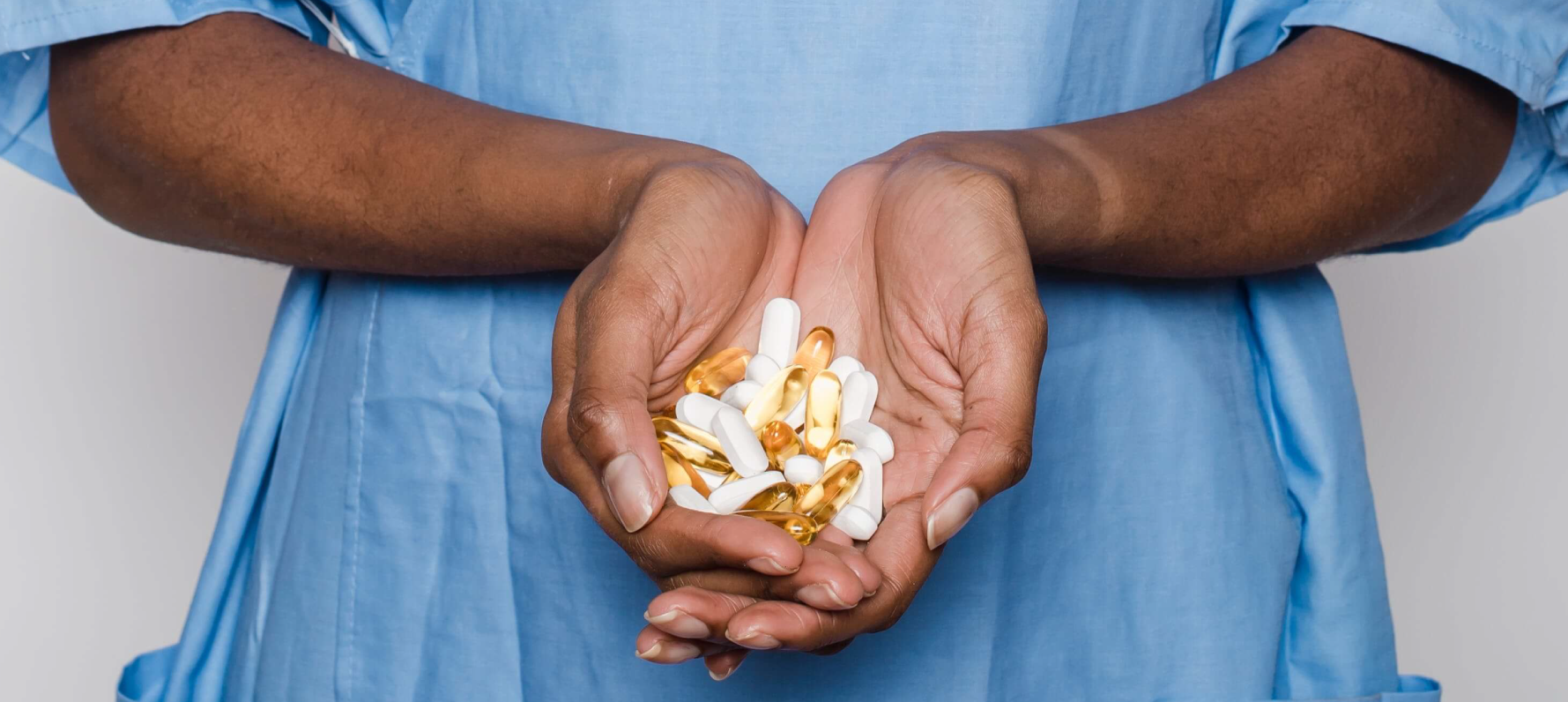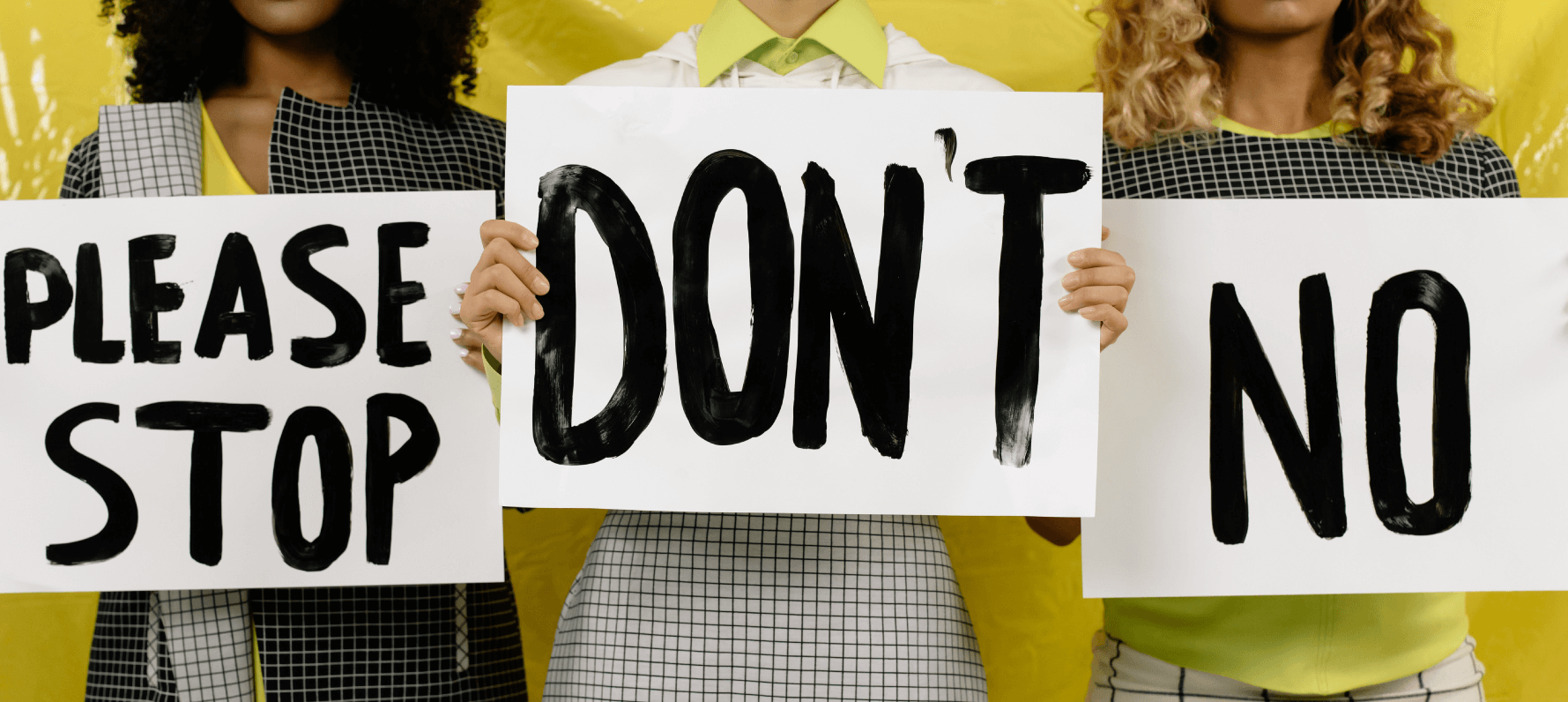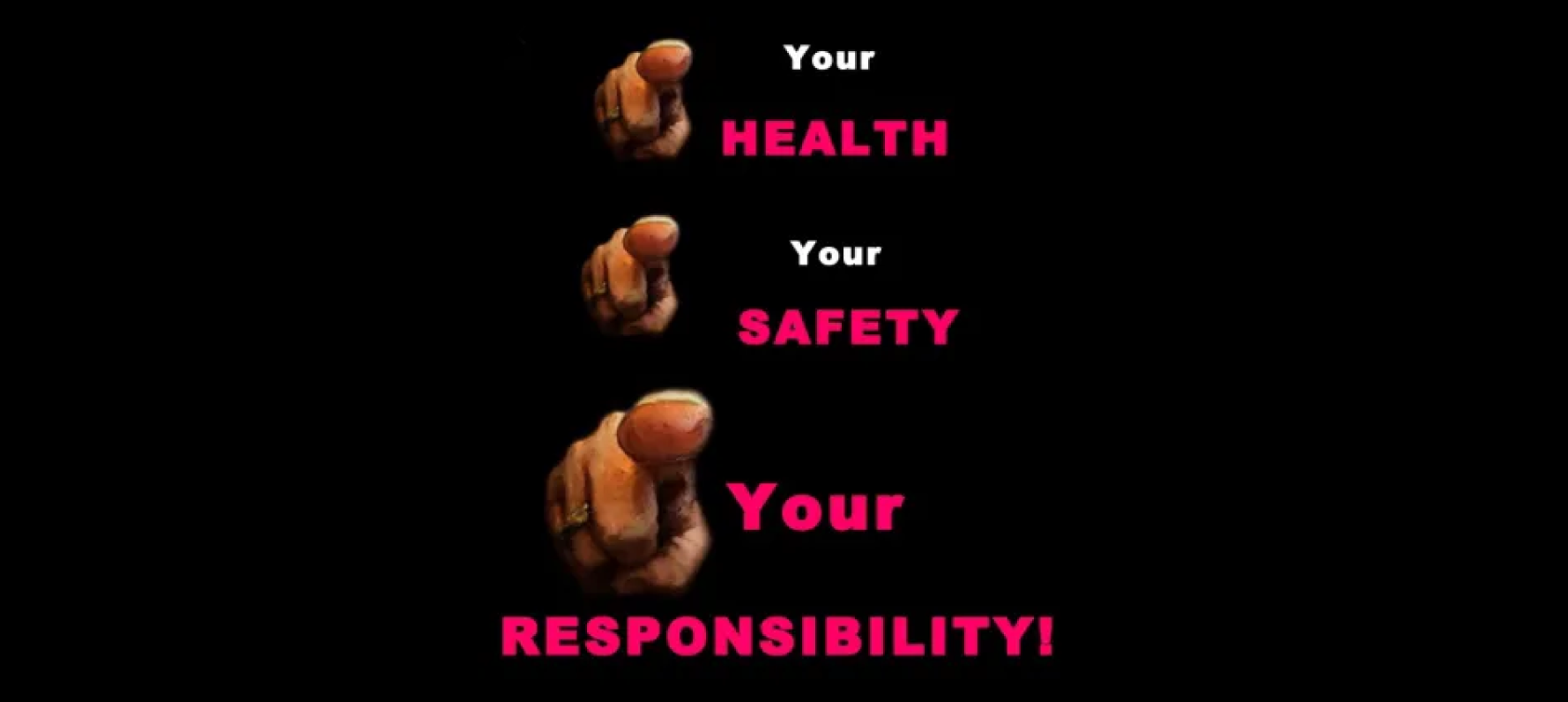UN and WHO call for 'significant shift away from biomedical model of mental health'
But what does it mean for us all? I have summarised the new guidance for you.
I am writing to you today about an important development in trauma-informed approaches to mental health, pathologisation, and trauma.
This development could change the lives of millions of people around the world - by moving us all away from the dominant biomedical model of mental health, and towards social models, rights-based models, and trauma-informed approaches to understanding distress and trauma.
On the
9th October 2023,
The World Health Organisation and United Nations collaboratively published their new practical guidelines to move away from the biomedical model of mental health, and instead, focus on the social determinants, oppression, poverty, abuse, violence, and other contextual factors that caused trauma and distress in humans. The new guidance is here: Click here to download the guidance pdf
At my company, VictimFocus, working towards our anti-pathology trauma-informed (APTI) models in policing, local authorities, health, education, charities, and private services has been paramount for several years. All our commissioners and colleagues work with us on the basis that they are working towards implementing anti-pathology, trauma-informed environments, policies, principles, training, education and support, not only for those in need, but for their workforces.
There has been much interest around implementing trauma-informed working, and moving away from biomedical models of mental health for several years. We have worked on projects for the NHS, who are trialling trauma-informed, anti-pathology versions of CAMHS in some places in the UK, for example. We are also working with a number of police forces to move to trauma-informed policing, improving victim care, writing new training packages, and working with force leadership to explore how they can truly implement trauma-informed approaches to their work in VAWG and wider.
This guidance is global, powerful, and long overdue. It is one of the first, and clearest, examples of guidance from the WHO and the UN which describes the biomedical model of mental health as ineffective, oppressive, harmful, outdated and narrow in focus. The document clearly argues for a human rights based approach to human suffering, a trauma-informed approach to mental health, and a move to anti-pathology, and anti-oppressive practice. Everyone at VictimFocus are proud to have been working to these standards and principles for several years, and we thank all our commissioners and leaders who have being doing the same.
What does the guidance say?
The guidance is pretty long, at over 200 pages. We recommend that you read it if you can, and consider the implications for your own lives, services and workforces. We will be here for you whilst you do this, and can help to build action plans and frameworks when you are ready.
I have summarised some of the most important parts of the report for you.
Here are some key takeaway points from the report:
- WHO and UN are calling for
significant shift away from the biomedical model of mental health which encourages psychiatric diagnoses, medications, forced restraints, institutionalisation, imprisonment and other oppressive medical practices – towards a trauma-informed, social, human rights, person-centred approach to mental health
- WHO and UN highlight the current ways
the biomedical model of mental health harms, oppresses, controls, isolates, stigmatises and discriminates against those who have been told they have psychiatric disorders, and who have not been validated in their traumas, distress, poverty, environments, oppression, or experiences
- WHO and UN recognise that
women and girls, people who are gay, lesbian, bisexual and transgender are more likely to be labelled as mentally ill, and more likely to face forced sterilisations, coerced abortions, coerced contraception, and conversion therapies.
- WHO and UN recognise that there are
widespread human rights violations and harm being caused by current biomedical model approaches
to mental health, which includes our psychiatric hospitals, services, treatments, and approaches
- WHO and UN recognise that
people who have been diagnosed with psychiatric disorders have been positioned as dangerous, unreliable and unstable, meaning that they are stigmatised and discriminated against in multiple systems of power (including health, criminal justice, family justice, education, employment, finances and their rights)
What
changes are the WHO and UN expecting to see?
- The
end of discrimination based on psychiatric diagnosis, including discrimination used to prevent access to health insurance, accommodation, and support.
- The recognition and respect for
legal capacity and personhood of people using any kind of mental health services.
- The
essential use of informed consent in all psychiatric services, treatments and approaches which includes accurate and truthful explanations of treatment evidence bases, side effects, withdrawal impacts, possible complications and non-medical alternatives.
- The
elimination of coercive or manipulative practices in psychiatry and mental health, including the
end of all forced psychiatric treatments, or treatments that are coerced or manipulative (e.g. You can only access support if you take this medication/You can only have access to your children if you accept this diagnosis and take this medication).
- The
prohibition of involuntary sectioning and hospitalisation and forced treatment.
- The
elimination of forced seclusion and restraints.
- The
development of trauma-informed, rights-based community support for everyone in need of support in their trauma or distress.
- The
development of peer-led and peer-run support services for people in distress and trauma.
- The implementation of programmes to
help the deinstitutionalisation of people who have been institutionalised for long periods.
- Accountability in all psychiatric services and provisions, which includes the establishment of independent monitoring bodies.
- Establishing a system for
implementing redress, reparations and remedies where people have been harmed by psychiatry and the biomedical model of mental health.
Why is this new guidance so important?
According to the document, the following reasons have been presented by the UN and WHO as to why this guidance to move away from the biomedical model is so important:
- Stigma, discrimination and several other
human rights violations occur regularly in mental health and psychiatric provisions to this day.
- There is an
overreliance on biomedical approaches to treatment options, which favour medications, and more dangerous procedures such as ECT.
- Many people with psychiatric diagnoses, particularly those who are minoritized and marginalised,
are not treated equally in law.
- Access to justice for people with psychiatric diagnoses on file has commonly been restricted, affecting their right to a fair trial, denying them the possibility to contest detention, forced treatment and abuses in mental health services.
- Psychiatric diagnoses have been used to
restrict a person’s right to file a police complaint or stand trial, to be taken seriously, to be protected from abuse, to be believed, to be seen as a credible victim or witness, to give evidence, to have access or custody of their children etc.
- People with psychiatric diagnoses on file will often be treated as if they do not have mental capacity and cannot make their own decisions about their lives or their care –
including whether or not they wish to receive any care for perceived ‘mental health issues’.
- International human rights laws require
non-discrimination and respect for human rights in all settings, including psychiatry.
- All humans should have the right to reject medical treatment in psychiatry and mental health, and should not be able to be forced or coerced into accepting medications or other treatments.
- There is little focus on the social determinants of ‘mental health’, as the biomedical model has been so influential.
Instead there needs to be focus on the true roots of human suffering and distress including oppression, harm, violence, abuse, poverty, cultural norms, discrimination, isolation, disadvantage, exploitation, bullying, chronic illness, lack of access to services and breaches of human rights.
- There has been little acknowledgement of the racism, colonialism, homophobia, ageism, sexism, misogyny, ableism, classism or the many other factors that psychiatry has leant upon and supported over decades. Further, there is much evidence that those from poverty, those with refugee status, those who seek asylum, and those from indigenous communities and cultures are more likely to be positioned as mentally ill, dangerous, and non-credible.
- Psychiatry and the biomedical model of mental health is dominated by Western reductionist medical beliefs that people are mentally disordered and dangerous, which came from colonial rule, and the rise of the lunatic asylums via the church and the government
As you can probably see from this short summary of points, the new guidance from the UN and WHO has the potential to change millions of lives, and will contribute to the paradigm shift many professionals and members of the public have been waiting for. The guidance was developed in consultation and collaboration with a global group of mental health, psychology, psychiatry, and human rights experts, academics, practitioners, leaders, activists, law makers, organisations, people who have been harmed by psychiatry and people with lived experiences of oppression, harm, violence, abuse, and discrimination.
It is an important first step for humans around the world, and one of the first clear condemnations of the human rights violations in our mental health systems in the UK and beyond.
Crucially, for most of our colleagues and commissioners, this document finally sets out what is meant by moving away from the biomedical model of mental health, and moving towards trauma-informed, anti-oppressive, anti-pathology ways of working.
In much of our work, we come across professionals and organisations who describe themselves as ‘trauma-informed’ but do not understand the theory, concept, power structures, or history of this paradigm. As a result, our trauma-informed training and approaches are usually radically different to what others have taught in the past.
We are therefore very pleased to see the UN and WHO validate our training materials, resources and approaches in this document, and this should assure and support all commissioners who have been looking for something solid to lean on, when looking at describing and implementing trauma-informed approaches to their work.
What will
VictimFocus being doing to support this guidance?
We are pleased that our work aligns with this document already, but we understand that for many of our commissioners and professional colleagues around the world, they may be thinking about how such a paradigm shift to trauma-informed, rights-based approaches to trauma would impact their workplace, their service design or their approaches to action plans, strategies, policies, and procedures.
Therefore, we will endeavour to provide the following to any organisation who needs it:
- Updated training, E-learning, interactive modules, or factsheets for professionals to cover this new guidance and the approaches
- Consultancy support to review and audit materials, training packages, policies, procedures and approaches
- Provide trauma-informed resources, flashcards, lesson plans and reflective journals via our store: VictimFocus Shop – victimfocus resources (victimfocus-resources.com)
- Leadership transformation support for those in senior leadership who would like to explore how to implement new approaches to their services
- Service design and delivery support for those who want to move to trauma-informed, anti-pathologising ways of working
- Lectures and talks to students, practitioners and academics to explain the new WHO and UN guidance, and map out what it means for transformation and improvement of services and government legislation over the coming years
- Develop and implement bespoke Road Maps to Trauma Informed Services for all professionals and services, to understand the key changes that would need to be made in every area of the service to move to a more trauma-informed approach
- Continue the roll-out of our accredited Train the Trainer programme, to teach trainers how to deliver trauma-informed, anti-pathology materials to others – details here: Become a VictimFocus Trainer – victimfocus resources (victimfocus-resources.com)
- Launch our new ‘How to commission trauma-informed services’ training for leadership, commissioners and funders – details here: How to Commission and Design Trauma-Informed Services: Understanding A – victimfocus resources (victimfocus-resources.com)
- Provide workshops around the UK as part of our ‘Trauma Informed Revolution Tour 2024’ in Manchester, Birmingham, Glasgow, Belfast, London and Exeter - tickets are here: Tickets: Exploring a Trauma-Informed Revolution for Women and Girls - – victimfocus resources (victimfocus-resources.com)
Email me on
Jessica@victimfocus.org.uk if we can help you or your teams.
As we have over
250,000 followers on social media and an average monthly reach of
over 6 million people, we will also commit to:
- Creating free fact sheets about moving to trauma-informed, anti-pathology ways of working - some are here: Victimfocus Factsheets
- Provide free checklists and roadmaps to redesigning services and provisions, you can read one of ours here: Victimfocus Tool Kits
- Provide free information about trauma-informed, rights-based, anti-pathology approaches to trauma and distress
- Continue to share, translate, and develop our free trauma-informed courses, resources, leaflets and PDFs for everyone around the world, you can find some of these here: Home (victimfocus.com)
- Continue to inform about anti-pathology approaches to understanding human trauma, vicarious trauma and distress via social media posts, videos and explainers
- Ensure our commissioned work continues to align with WHO and UN best practice guidance as set out in this document
- Continue to promote and encourage the use of our Indicative Trauma Impact Manual instead of biomedical model alternatives such as the DSM and ICD, you can read about this here: Welcome to the trauma-informed revolution! (victimfocus.com)
I hope you are as excited, optimistic, relieved, validated (and a little blown away!) as we are right now. The UN and WHO have published something truly life-changing for so many people who have been pathologised, abused, tortured and harmed by the biomedical model of mental health - and it is time that we listened, and built something much more human.
Thank you for reading, please do share this article, and the new guidance with as many professionals and leaders as you can.
Again, a HUGE thank you to every academic, practitioner, researcher, activist, survivor, and human being involved in this collaborative document. It is so reassuring to know we are not alone in our mission for trauma-informed, safe, ethical services.
Get more trauma-informed content!










